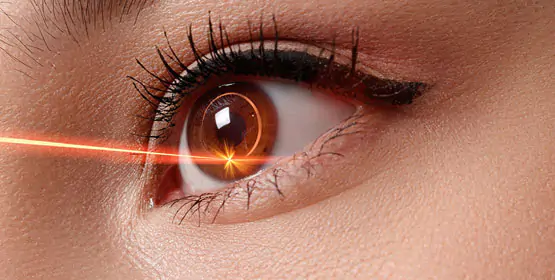جراحة تصحيح عيوب النظر الانكسارية
يمكن تصحيح معظم عيوب النظر الانكسارية أو تحسينها على الأقل بواسطة جراحات تصحيح العيوب الانكسارية. هذا المصطلح العامي يضم كلاً من جراحة تصحيح العيوب الانكسارية بالليزر وتصحيح البصر عن طريق زراعة العدسات داخل العين. والطريقة الثانية تسمى جراحات Phakic intraocular lens أو IOL

